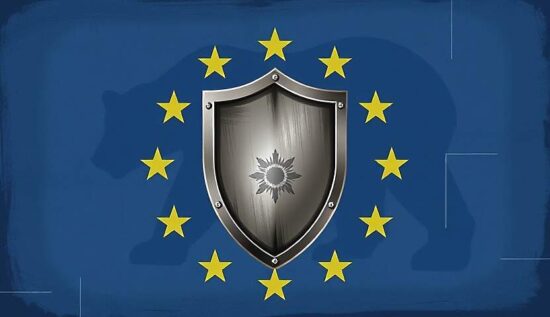EU’s “Defense of Europe” Concept Revisited
The idea of a “European Defense” has a long history, dating back to 1954 when the European Defense Community (EDC) was proposed. The project was ultimately torpedoed by the French parliament, where communist and Gaullist lawmakers united to block the initiative, which was seen as a US-backed project in the context of the Cold War.
It took three decades for European leaders to revisit the concept. Since the 1990s, various projects have been designed, such as multinational “Battle Groups” in the early 2000s, but they never materialized due to a lack of political consensus among member states.
Most European politicians have come to realize that a unified, integrated army is unattainable. Instead, they aim to converge strategic cultures and highlight the convergence of national defense industries, particularly through joint procurement financing. A frequently cited argument is the diversity and incompatibility of materials, leading to a lack of economies of scale in the production of weapons and materials on the continent.
Recent events, however, have contributed to the sense of urgency and hektik among proponents of European integration: the war in Ukraine and the return of Donald Trump to the White House.
The war has emboldened Atlanticist governments. In Poland, the Baltic states and Nordic countries, leading politicians repeatedly stress that they were right to warn of the aggression of Russia, which must be stopped in Ukraine, or it will spread to the next neighbors. Some have even begun to believe their own propaganda and convinced many of their colleagues.
French President Emmanuel Macron, speaking to a group of French military leaders on January 20, said, “The front line is moving closer.” Therefore, not only should arms and ammunition deliveries to Kiev continue, but also the allocation of funds for the armies of individual member states should be spectacularly increased. In France, a law passed in 2023, increasing military spending by more than 3 billion euros per year, has been deemed insufficient by Macron, who now claims the original framework of 400 billion euros for six years is too narrow.
The European Commission President and NATO also share this view, as the pressure from Donald Trump on his allies has increased. This pressure was already strong during his first term (2017-2021) and led to a permanent readiness by Washington to shift part of the financial “burden” to the Europeans, a view also expressed by Barack Obama and later by Joe Biden. The demand was for each ally to spend at least 2% of their GDP on military spending.
Most have achieved this goal: in 2024, France, Germany and the Netherlands, for instance, reached 2.1% of their GDP. The Baltic states gave at least 3% and Poland 4.1%. Polish Prime Minister Donald Tusk, who took the half-year presidency of the European Council, said, “If Europe wants to survive, it must arm itself.”
Tusk became the most ardent advocate of Trump’s demands, as in Washington, the demand is now for 5%. In the election campaign, Trump threatened to abandon uncooperative countries, saying they would “not pay their bills.”
In reality, the goal is to secure European contracts for US firms. To achieve this, Trump has raised doubts about the US’s continued financial support for Kiev, prompting some European politicians to consider replacing Washington’s financial support with their own, a financially unrealistic perspective.
Between 2022 and mid-2024, the US spent 84.7 billion euros on military, economic and humanitarian aid for Ukraine; the EU, as a whole, 43.8 billion; Germany, 15.1; the UK, 13.7; and France, 4.6 (figures from the Kiel Institute, disputed by Paris). European leaders now face a threefold challenge: they want to continue delivering to Ukraine, renew their own ammunition and material stockpiles and increase their own capacities.
Andrius Kubilius, the EU Defense Commissioner, is preparing a “White Book” for March, which includes very costly projects: a “shield” for air defense, a European “shield” for cybersecurity, a “shield” for the North-East front, investments in military mobility and a “shield” for space. His colleague, Kaja Kallas, head of EU Foreign Policy, said, “President Donald Trump is right if he says we don’t spend enough.”
However, two contradictions emerge. The first concerns the European Defense Industrial Program (EDIP), which aims to establish how member states can jointly produce weapons. It was presented by the Commission in January 2024 but has yet to be adopted.
The second contradiction is clear: how can European leaders push for dramatically increased military spending – up to 500 billion euros over ten years – when national budgets are under immense pressure and austerity is more than ever in demand?
European leaders are seeking ways to achieve this. A new “big joint bond” like the one issued in 2020 in response to COVID? A consensus is unlikely, especially given German resistance. An expansion of the European Investment Bank’s (EIB) credits to military production? This possibility is being explored, but would not be enough. Freezing Russian assets (and not just their interest) could be an option, but it would be legally complex and make the EU untrustworthy in the eyes of global investors.
The informal summit, where the EU’s heads of state and government met on February 3, was meant to provide guidance and answers, but no consensus was reached, except for the mention of an old idea: finding a way to exclude military spending from the calculation of public deficits.
National budgets remain the only option. The NATO Secretary-General has supported this path, or even implied it. Mark Rutte, former Dutch Prime Minister, said, “Spending more on defense means spending less on other priorities.” And further, “In the average, European countries spend up to a quarter of their national income on pensions, health and social security systems and we need only a small fraction of this money to strengthen defense.”
This led Euractiv to the headline: “Less for health, more for defense, demands NATO Secretary-General.” At least, that is clear.





